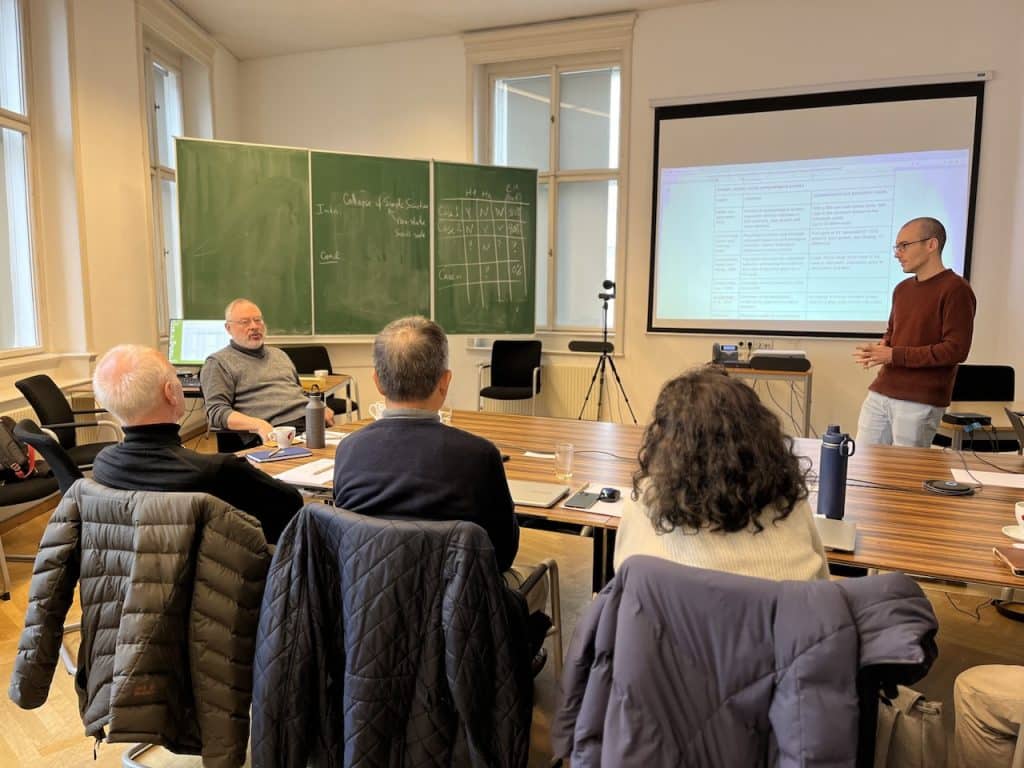POPULATION HAS NOT ONLY GROWN
WORKSHOP | Since humans discovered agriculture, population has grown rapidly. However, repeated declines also occurred, even among the first farming communities. International experts even among the first farming communities. International experts explored a wide range of evidence for this along with several possible explanations in a CSH workshop.
It is well known that over the past 10,000 years, since people started to settle and doing agriculture, human population has grown tremendously. Yet, more and more evidence is accumulating that this growth was not monotonic, but interspersed by periods of declines, often associated with severe crises.
„One very dramatic example of true population collapse affected the Cucuteni-Tripolye-Culture in the 4th millennium BCE. At its peak, there were large proto-cities with 10,000 or more inhabitants, but after a complete depopulation of the area archaeologists could not find any evidence of habitation for 600 years following the collapse,” CSH-Researcher Peter Turchin explains.
It happened also in the Neolithic
Well-known cases over the course of written history has been studied extensively. Less attention has been paid so far to population declines during the Neolithic, a period without large-scale political organization, writing or use of metals. Yet, population busts following booms seem to be an important feature of this period as well. So far, there is no consensus on the cause (or causes) of such declines, even though we know that Neolithic people faced many challenges.
Manifold possible drivers
In this workshop, hosted by Complexity Researchers Peter Turchin and Dániel Kondor, experts with a wide range of knowledge on Neolithic population history joined us at CSH Vienna to accumulate their knowledge about estimates of population growth or decline. „We now understand that population declines are a common phenomenon, although there are differences in how this happened and factors that might have been important,“ Kondor says. Possible drivers of population trajectories include the variety of challenges faced by early farmers like changes in climate, overexploitation of resources, conflicts, warfare and diseases.
Regions of special interest
„We discussed knowledge on the population history of several world regions, concentrating on evidence of alternating periods of population growth and decline, so-called booms and busts,” Kondor explains.
The Central European Neolithic is one of the cases with a lot of research. Farmers, arriving from Anatolia across the Balkans, settled the region from present-day Hungary to the Netherlands in the 6th millennium BCE. They were quickly growing in numbers, which indicates that they apparently managed to be well adapted to the local conditions. Significant population decline happened 300-500 years after initial settlement, with some regions abandoned almost completely. Besides Europe, other important regions of Neolithic settlement, for example in China, are also in the focus of research.
Fascination of collapse
“Everybody is fascinated with the collapse of large-scale complex societies. Many thinkers have proposed that “collapse” – as manifested by a drastic decline of the society’s size or a so-called a population „bust“ – is the price we pay for social complexity. But as our knowledge of population dynamics of “simple”, small-scale societies of Neolithic farmers became more detailed, thanks to intense archaeological research, we learned that these societies were, perhaps, even more susceptible to population busts than later states and empires. The causes of such busts remain mysterious. There are many hypotheses but no scientific consensus so far”, Turchin says.
PARTICIPANTS IN-PERSON:
Stephen Shennan (UCL)
Johanna Hilpert (Christian-Albrechts-Universität zu Kiel)
Detlef Gronenborn (RGZM)
Ruiliang Liu (British Museum)
Zhiwu Chen (HKU)
PARTICIPANTS ONLINE:
Alessio Palmisano (Universitá di Torino)
Martin J Smith (Bournemouth University)
Aleksandr Diachenko (National Academy of Sciences of Ukraine)
What is the Neolithic period?
Humans have adopted agriculture and settled lifestyle, but not yet the use of metals to any significant extent.
Date ranges of it vary based on the region considered – starting around 10,000 BCE at the earliest and lasting typically until 4,000-2,000 BCE in Eurasia.




